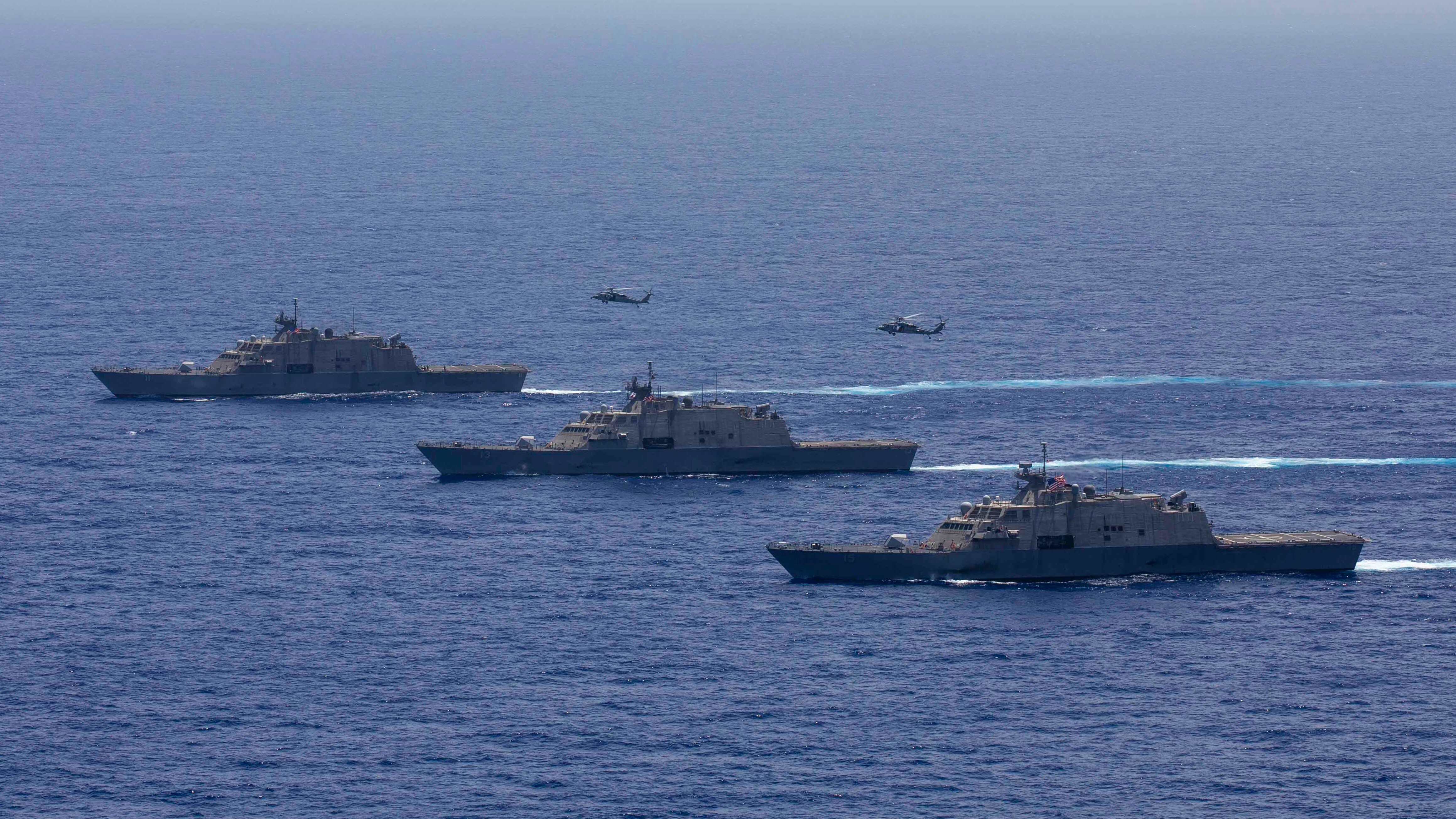The littoral combat ship Sioux City recently completed what the Navy is calling an “historic” deployment that saw the Florida-based ship become the first LCS to operate in the waters of U.S. 6th Fleet and U.S. 5th Fleet during a five-month cruise.
Sioux City’s blue crew returned to Mayport on Oct. 2. Along the way, the ship’s deployment revealed how the Freedom class of LCS can still conduct operations, even as most of that class of ships are awaiting modifications to their combining gear, a class-wide design flaw that first emerged in 2020.
An LCS’s combining gear connects the ship’s diesel engines to gas turbines that provide a power boost, goosing the ship’s top speeds in the process.
While the combining gear issue has hobbled the ship class to an extent, officials now say they have figured out a workaround to keep those LCS operational, even as existing ships await modifications.
Sioux City steamed 28,000 nautical miles during its deployment, and achieved speeds of more than 30 knots, all without receiving the combining gear fix or damaging that system, according to Cmdr. Scott Whitworth, the commanding officer of the ship’s blue crew.
RELATED

“There were absolutely no issues operating the ship without the repair being done,” Whitworth told reporters Wednesday.
That mitigation basically involved not running the ship in a combined gas turbine and diesel mode, while limiting the speed of the ship, according to Capt. David Miller, commodore of Littoral Combat Ship Squadron 2.
“It was definitely time and we were ready to send Sioux City, and we could manage the operational limitations with the gears that there were,” he said.
When the combining gear problem first emerged in 2020, Sioux City’s planned deployment to the European and Middle Eastern waters of 6th and 5th fleets, respectively, was delayed until officials had a better handle on the issue.
“We found we could definitely mitigate that challenge and deploy the ship successfully; Sioux City proved that was the case,” Miller said Wednesday. “We’ve really put that problem behind us.”
Sioux City’s cruise saw it transit the Baltic Sea, the Mediterranean Sea, the Red Sea, the Gulf of Aden, the Northern Arabian Sea, the Gulf of Oman and the Persian Gulf.
Along the way, LCS underwent maintenance in those fleets, a first for the ship class.
In Bahrain, the ship got equipped with a underwater anti-mine drones, and the ship was able to deploy and control those systems remotely as well.
“I could not be more proud of this ship and her crew,” Whitworth said. “They made it look easy.”
Geoff is the managing editor of Military Times, but he still loves writing stories. He covered Iraq and Afghanistan extensively and was a reporter at the Chicago Tribune. He welcomes any and all kinds of tips at geoffz@militarytimes.com.





